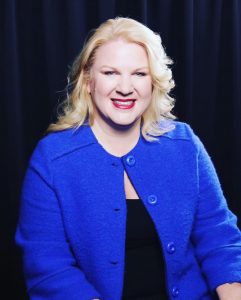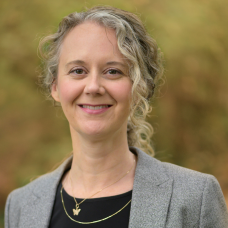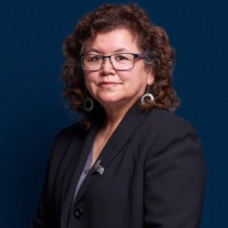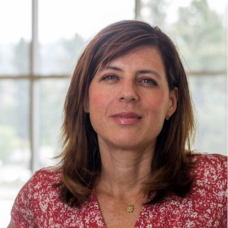Elder Abuse Response Presentation at the Canadian Elder Law Conference: Interview with Laura Tamblyn Watts
June 21, 2019
BY Sara Pon
This post is part of a series highlighting key themes and presenters from the 2019 Elder Law Conference. To see the other posts in the series, click here
Introduction

We are so excited that Laura Tamblyn Watts, the Chief Public Policy Officer at CARP (Canadian Association for Retired Persons), will be presenting at the 2019 Canadian Elder Law Conference. CARP will be joining us this year as a silver level conference sponsor. Many of you will recall that Laura was the CCEL National Director for a number of years. She continues to be a great CCEL ally
![]()
and national leader in the elder law community, and we have followed her career with interest.
On the heels of World Elder Abuse Awareness Day (June 15), in this blog post we share an interview with Laura on her upcoming conference presentation, entitled “A New Made-in-Canada
Model for Elder Abuse Response”. She brings her vast expertise on elder abuse law and practice to support big-picture visionary thinking on how to move forward in the face of so many barriers to preventing harm to older people and responding effectively when older people are victimized. She shares some of her concerns in this blog post. To hear more of her ideas, join us at the conference!
Can you describe your presentation on a new model for elder abuse response?
Laura: What is important is for us to look at elder abuse at a macro level. We have been very concerned with trying to create resources and responses to individual issues and community-based issues. Elder abuse is an issue that is problematic now, yet we know that with demographic shifts and resource constraints it is only going to get worse in the near future. My presentation is going to help launch a conversation about how we should be thinking about and designing elder abuse response for one year from now to 20 years from now, and challenging some of our notions that are 20 and 30 years old. We were very concerned before about making sure that people’s individual autonomy would be respected, and the state wouldn’t swoop in and snatch people from their homes. This is not really the focal point now. What we are seeing now is very fragile and vulnerable people are not getting any kind of significant response around elder abuse and neglect, and we need to start thinking about what the response should be in the future.
Why do you feel a new model for elder abuse response is needed now?
Laura: With the change in demographics, the increase in elder abuse, and the ineffective piecemeal approach that we have right now, we know the system is going to be increasingly stressed. We need to start thinking about how to create a model which does meet the needs of our most vulnerable population in a way which is sustainable and responsive.
What would you say are the biggest ethical challenges facing lawyers in relation to elder abuse?
Laura: There are three challenges I see.
- The first piece is so much of elder abuse and neglect can’t really be addressed by lawyers because there isn’t necessarily the financial compensation to do so. What it also does need is quite a lot of time on the part of the lawyer to really wrestle these issues into the ground and be able to support people. Lawyers are often put into a position of wanting to help and knowing they need to help, but not necessarily knowing precisely how they are going to attack the issue in a way which is financially manageable for a client.
- Another professional challenge is a family lawyer that has been dealing with the whole family and one of the lawyer’s clients becomes vulnerable or exploited by another one of the lawyer’s clients. There can often be a conflict of interest or at least the worry or perception of a conflict of interest.
- The third piece is that ethically lawyers often fight with their obligations around keeping information private where they know that there may be significant abuse ongoing. The lawyer may be wrestling with understanding their own need for solicitor-client privilege but also how and when to share some information when an older person is at risk.
What role do you feel lawyers are most able to play in helping to respond to and prevent elder abuse?
Laura: I think lawyers are one of the key social leaders that can help prevent and respond to elder abuse. The solicitor has a wonderful opportunity to provide support and advice, both on a legal set of issues, but also on a lot of pragmatic and practical issues around avoiding problems before they start. Lawyers can help do long term thinking and understanding the complexities of how some people may feel. From a litigator’s point of view, very often in elder law, you don’t have that arms-length type of conflict. These are often people who are related to each other or working together, so quite often the preservation of the relationship is a priority, and it’s an area lawyers can assist on but also are challenged by.
How has your background as a lawyer, advocate, and policy officer helped you in your work on elder abuse?
Laura: I think that a lot of people can focus more succinctly on some of the social aspects of elder abuse. There are far fewer people who have expertise in understanding the legal aspects of elder abuse and being able to parse out what are sociological issues versus what are legal issues. People can say it’s not right that someone is doing something to me. Those with legal backgrounds can ask is it not right because of how it feels to you emotionally or is it not right because it is against the criminal code. The other piece is having a legal background and a policy background allows you to identify and raise awareness of systemic issues.
In your opinion, what do you think are the most pressing issues in elder abuse prevention or response?
Laura: There is not a coordinated approach to response in community, so you don’t get predictable responses. Also, there is no one agency who elder abuse response really belongs to. On the whole, there are few people you can call that will provide a response which is transparent and thoughtful and effective. We have so little case management. I do think that is a very pressing issue.
I think also we need to understand the question of how ageism plays a critical role within elder abuse. I challenge people to go into any card shop and see issues of race or gender or homophobia represented as examples in a mocking or derogatory way. Yet that is the standard in the case of age. It is shocking. We think about what makes elder abuse and response prevalent and increasing, but we need to intersect our thoughts around ageism and how we as a society don’t respect our elders.
Where do you feel Canada’s elder abuse response is not doing what it needs to do?
Laura: There are three places where this is especially so.
- At a very narrow level, CARP would like a 1-800 number provided by the federal government where a human being answers the phone and is able to guide individual inquiries to local resources, to help bring it back to the community response.
- The second piece is we generally don’t have very good designated responders. In BC, Health Authorities have designated responders, and you also have the PGT and the Ministry. But it doesn’t cover off all instances and circumstances. There are conflicts in the BC context: if the health authorities are responding to abuse and neglect they are often put into a situation where they themselves are the people being accused of being the abusers. There is very little in the field of independence in this regard. I also think generally the resources of the PGT are not what they need to be. If I look at the rest of the country, those cases are ever more the case.
- The last piece I would offer is where we have mandatory reporting requirements, you are supposed to have responsibility up to the self-regulating colleges. Yet, most of the professionals are less aware than they should be about their obligations as reporters, and the colleges are either unaware of their obligations as a reporter or don’t know how to feed this information into supported responses.
Are there any models for elder abuse response internationally which you feel Canada could learn from?
Laura: There are certainly models in other jurisdictions to look to for different pieces. Do I think any one country has it perfectly right? I don’t. I would offer that the Australian models of informal tribunals are a useful way to bring the law in, but to also allow people to get some resolution. This can work very effectively at a guardianship or decision-making level. When it comes to consent and capacity issues, the Ontario consent and capacity board is unique. It is a good first step BC could look to. In the United States, they have a very useful centralized agency that everyone knows about called National Adult Protective Services Association. Whether or not NAPSA is the right formula for Canada, I think that is part of our conversation. In the United States, what they do right is people know who to call, there is a clear mandate via this agency, and they keep decent numbers on of prevalence of elder abuse.
Canadian Elder Law Conference
The Canadian Elder Law Conference, entitled Bridging the Gap: Elder Law for Everyone will be taking place from November 14-15, 2019 in Vancouver, BC. Laura’s presentation, A New Made-in-Canada Model for Elder Abuse Response, will be at 9:40 am on the second day, Friday, November 15, 2019. Kimberly A. Whaley, founding partner at Whaley Estate Litigation Partners, will be presenting on Elder Abuse: Civil and Criminal Remedies, at 4:00 pm on the first day, Thursday, November 14, 2019.
You may register for the full conference or for only the mediation workshop. For more information, visit the CCEL’s Canadian Elder Law Conference page.
















































